Calculus II Chapter 7
1/34
There's no tags or description
Looks like no tags are added yet.
Name | Mastery | Learn | Test | Matching | Spaced |
|---|
No study sessions yet.
35 Terms
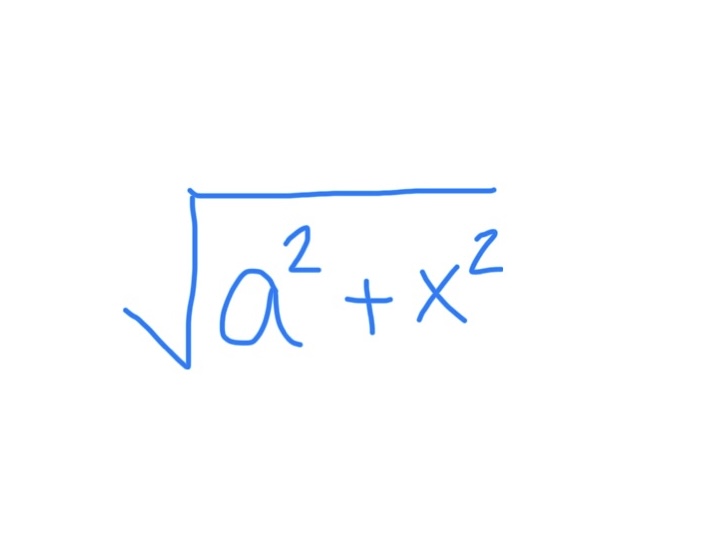
If you see this, use…
x = atanθ
dx = asec²θ dθ
1 + tan²θ = sec²θ
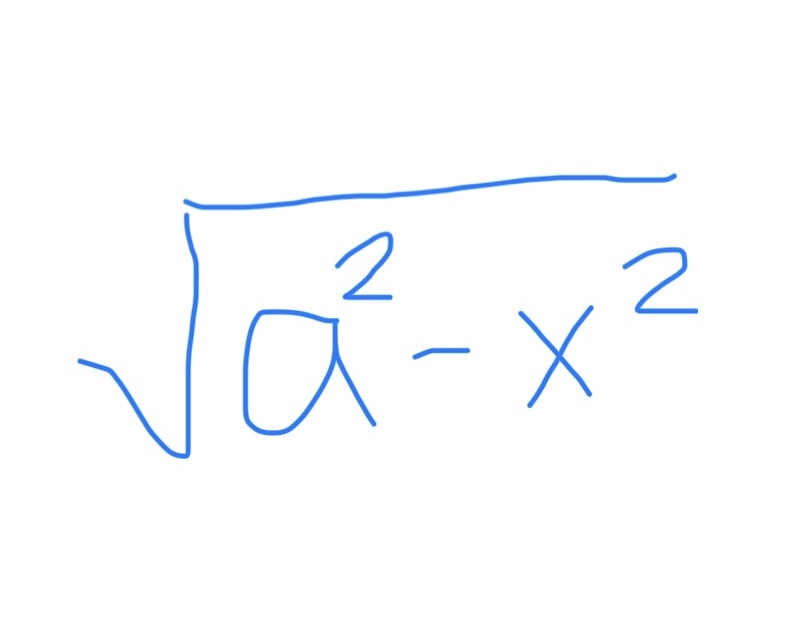
If you see this, use…
x = asinθ
dx = acosθ dθ
1 - sin²θ = cos²θ

If you see this, use…
x = asecθ
dx = asecθtanθ dθ
sec²θ - 1 = tan²θ
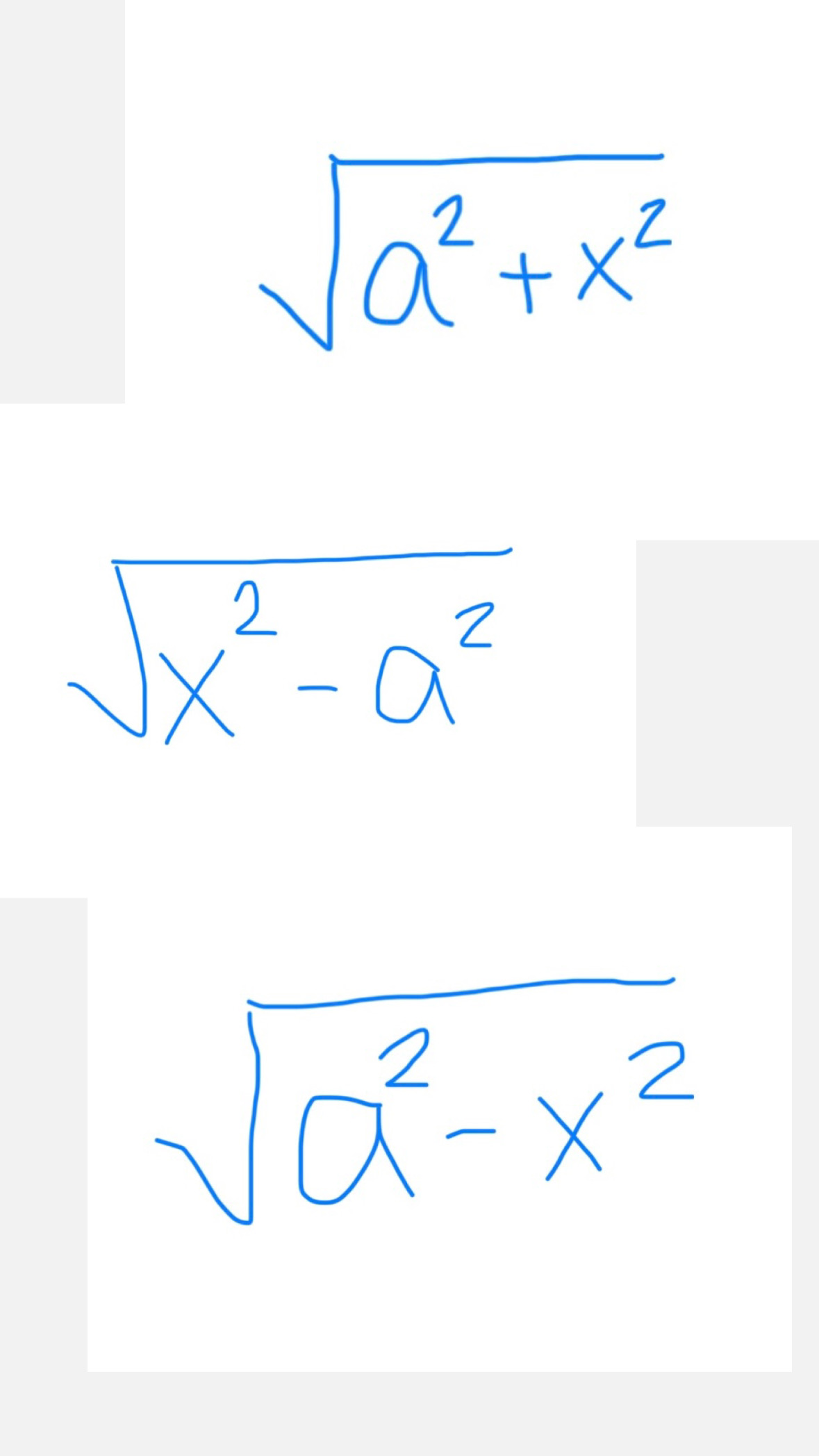
Evaluating Integral with
Find specific strategy and plug into x and dx
If possible, take out constant GCF
Replace with Pythagorean trig identity
Cancel out terms
Look at initial x = __ and isolate the trig function
Create triangle and plug in sides
final unknown side is original sqrt in eqn
Replace answer with triangle values
Evaluating Integral where Num and Denom are Reduced Polynomials
no common factors
Deg T < Deg B
Factor num and denom
Separate eqn into 2 fractions added to each other whose denominators are each factor and numerator are variables
Linear denom = A, B, C … numerator
Quadratic denom = (variable)(x^one less degree) continue until get lowest degree
Set original equation equal to this
Multiply everything by original denominator to cancel out terms
Solve for each variable by systems of eqns
Plug in results for each variable into setup from Step 2
Integrate
∫ cos²θ

∫ sin²θ
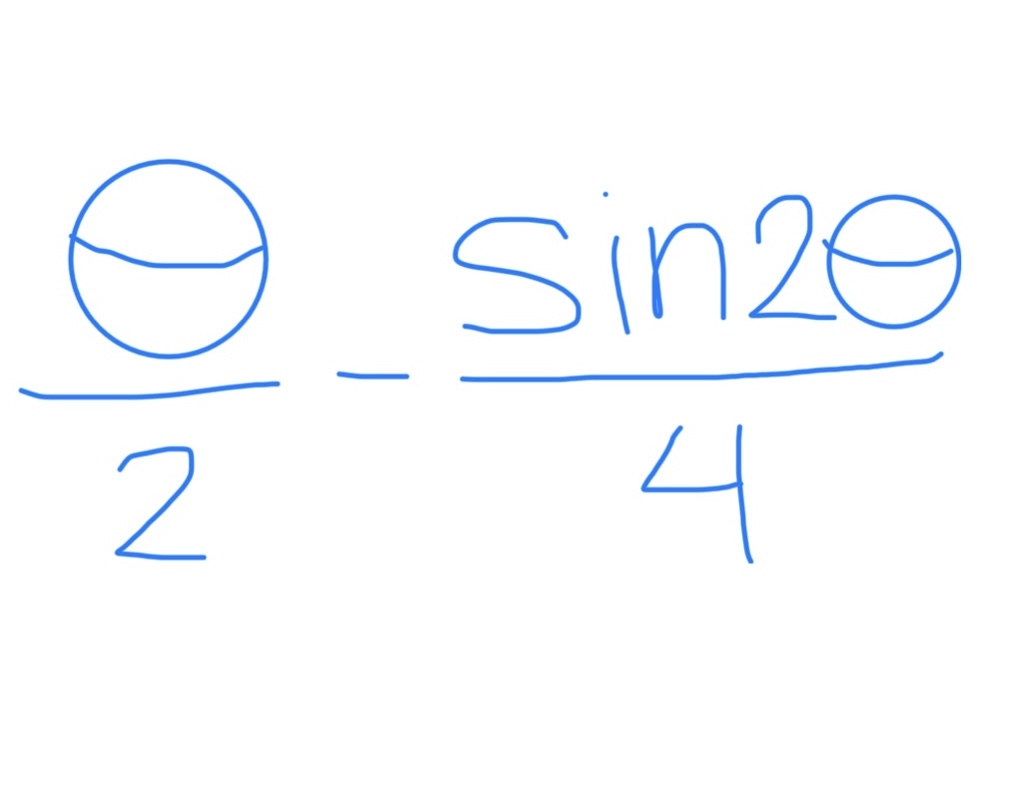
Use Table for Repeating Integration by Parts With…
xnsinx
xncosx
xnex
Evaluating Integrals with Repeating Integration by Parts
Identify u and dv using LIATE
Create table
Find derivatives under u and antiderivatives under dv until you reach 0
Multiply diagonally and the combination of this is your answer
the table goes +, -, +, - downward
What is Antiderivative of eax?
1/a eax
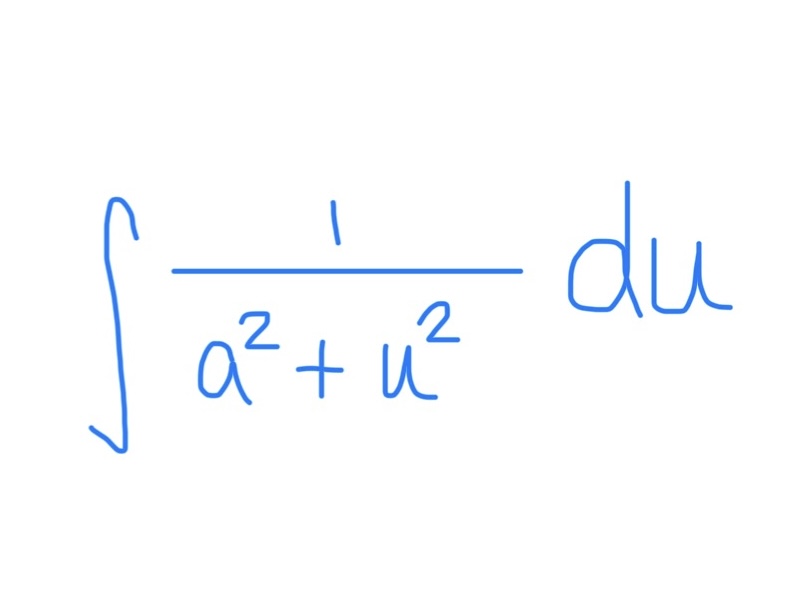
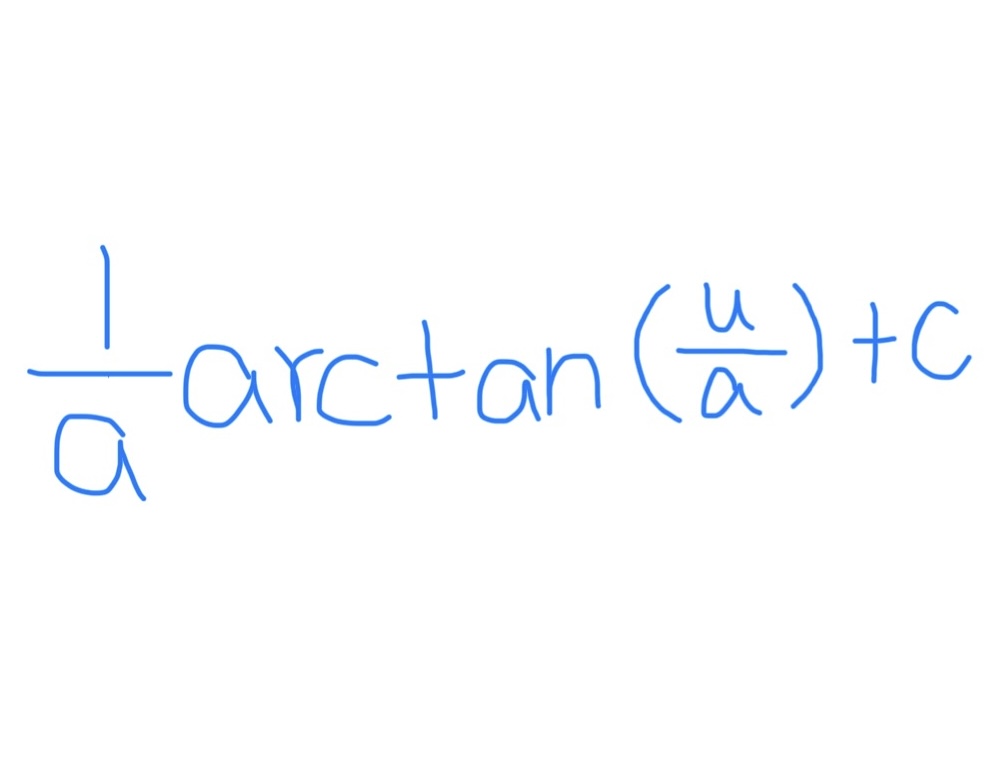
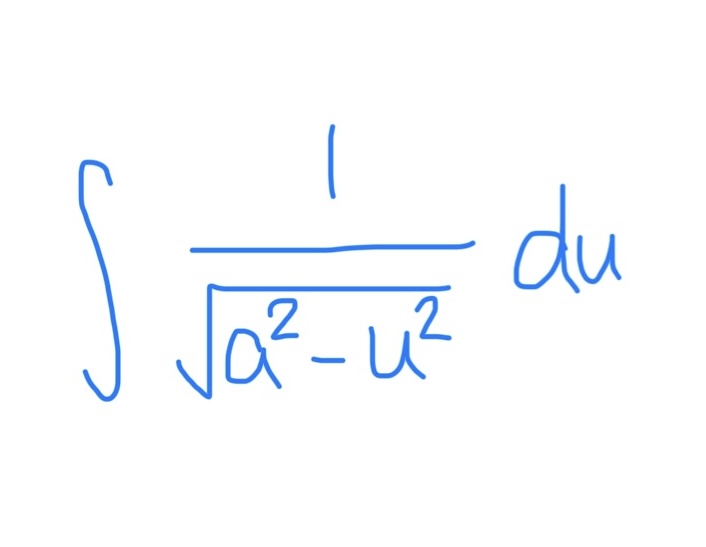
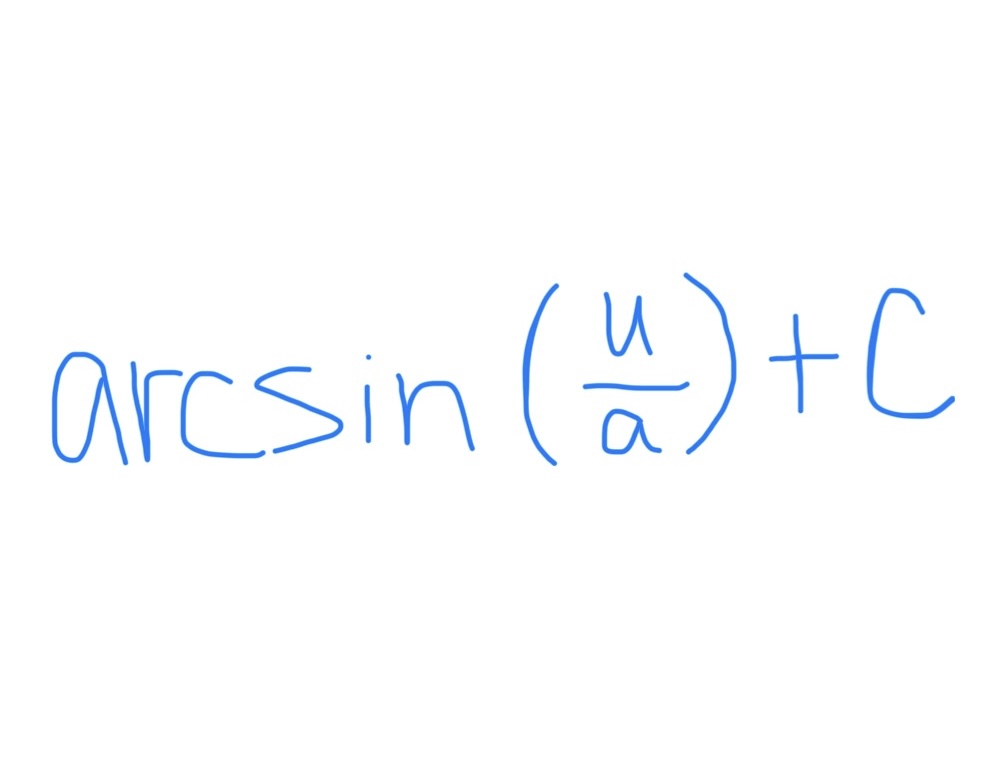
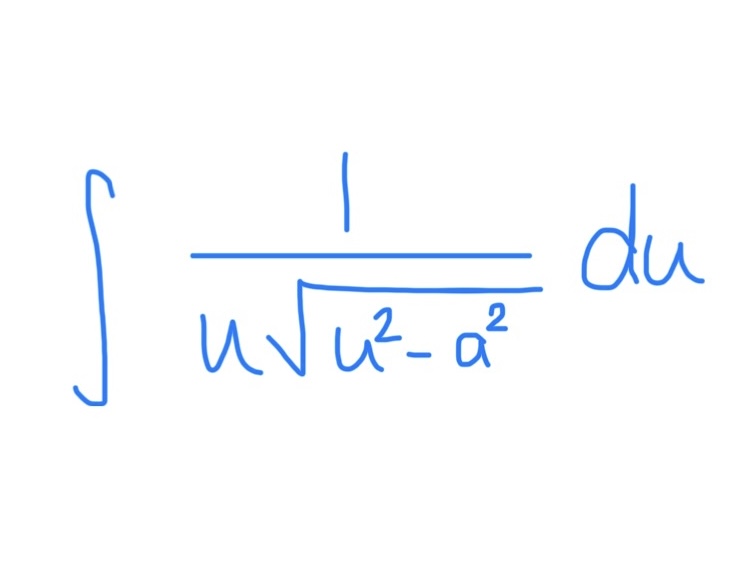
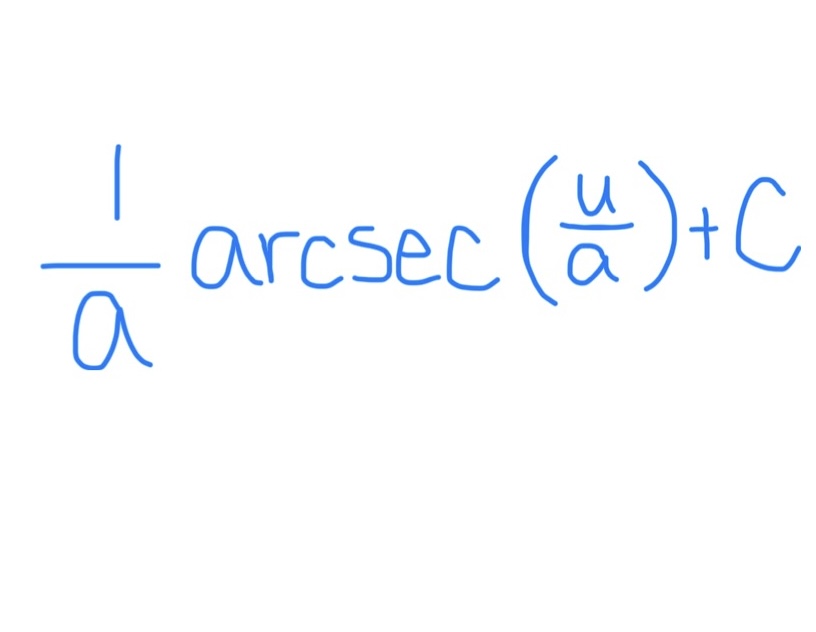
∫ tan(u) du
Ln |sec(u)| + C
∫ cot(u) du
Ln |sin(u)| + C
∫ sec(u) du
Ln |sec(u) + tan(u)| + C
∫ csc(u) du
-Ln |csc(u) + cot(u)| + C
∫ sin(u) du
-cos(u) + C
∫ cos(u) du
sin(u) + C
∫ sec²(u) du
tan(u) + C
∫ sec(u)tan(u) du
sec(u) + C
∫ csc(u)cot(u)
csc(u) + C
∫ csc²(u) du
-cot(u) + C
Derivative of arctanx
1 / 1+x²
Derivative of arcsinx
1 / sqrt(1-x²)
When To Use Integration by Parts?
… when you’re dealing with:
xnsinx, xncosx, xnLnx, arctanx, arcsinx, arcsecx, xnex, exsinx
Evaluating Regular Integration by Parts Integrals
Determine u and dv using LIATE
Rewrite eqn as uv - ∫ v du
Solve solvable integrals
Identifying Circular Integration by Parts
When one step will spit out a previous function or the original function
Evaluating Circular Integration by Parts Integral
Determine u and dv using LIATE
Rewrite eqn as uv - ∫ v du
Solve, but when you get result that is the original eqn, take what you have so far and set the original eqn as I and then set everything equal to I
Solve for I to get answer
How to Integrate ∫ sinn(x) cosn(x) dx Where There’s an Odd Power on Sin(x) or Cos(x)
Pull out a factor from whichever trig has odd power and put it with dx
Replace odd trig using sin²(x) + cos²(x) = 1
Trig function that wasn’t odd is u
cos(x) = odd
u = sin(x), du = cos(x)
sin(x) = odd
u = cos(x), du = -sin(x)
How to Integrate ∫ sinn(x) cosm(x) dx Where Both Powers are Even
Use power reduction formulas
sin²(x) = (1-cos(2x)) / 2
cos²(x) = (1+cos(2x)) / 2
Deconstruct all trig into (__)²
Replace w/ power reduction formulas
Integrate
How to Integrate ∫ tann(x) secm(x) When Power of Sec(x) is Even
Pull out a factor from sec(x) so that it becomes sec²(x) and put it with dx
Replace rest of sec(x) with sec²(x) = tan²(x) + 1
except the sec(x) that’s part of dx
Do u-substitution where
u = tan(x)
du = sec²(x) dx
How to Integrate ∫ tann(x) secm(x) When Power of Tan(x) is Odd
Pull out a factor from tan(x) so that it becomes tan²(x) and put it with dx. Also pull out a factor from sec(x) and put it with dx
Replace rest of tan(x) with tan²(x) = sec²(x) -1
Do u-substitution where…
u = sec(x)
du = sec(x)tan(x) dx
How to Integrate Individual Trig Functions with Even Powers
Use power reduction rule
sin²(x) = (1-cos(2x)) / 2
cos²(x) = (1+cos(2x)) / 2
Then use u-du integal
How to Integrate Individual Trig Functions with OddPowers
Use u-du integral